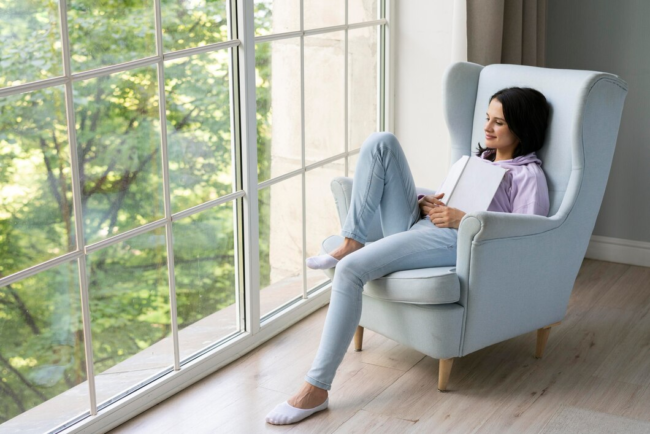
Some of the numerous reasons homeowners are growing more interested in bay windows are natural light, architectural interest, and more internal space. Not only do these window types brighten rooms, but they also provide a panoramic view that regular windows just can’t match. These elegant choices are definitely worth a closer inspection.
Usually projecting outward in a more pointed, angular shape, bay windows are composed of three windows: a large picture window in the middle and smaller windows on either side. The effect is a snug nook ideal for sitting or the display of plants. Bowing outward gently, bow windows feature four or more windows, hence offering a more subtle, softer view and more rounded, gentler inward projection. While the ultimate decision rests on personal preference, available space, and architectural balance, both styles create a distinctive focal point.
What Affects Bay and Bow Windows’ Cost?
There are a number of factors that impact the ultimate cost of such windows. Knowing them helps homeowners plan their budget appropriately and make the correct decisions:
- Size and quantity of panels.
- Glass type used (single, double, or triple glazing).
- Materials for frames: vinyl, wood, fiberglass.
- Customization options.
- Labor and window installation costs.
- Roofing and support system (particularly for larger bow styles).
Comparing Options: Bow Window Costs vs. Bay Windows for Sale
Upon comparing the prices of bow windows with bay windows for sale, the differences in price largely have to do with the number of panes of windows as well as the complexity of installation. Starting from the lowest-end models to some of the more upper-end ones, such as Pella bay window cost, bay unit installation tends to be less costly on average, with its excellent energy efficiency and special-order treatments.
More expensive are bow windows, which are curved and have more glass area. They are a favorite for large living rooms and master bedrooms since they allow more light and a more dramatic exterior look.
Material and Design Considerations
The duration that the installation will run for, as well as its appearance, is determined by the materials involved. Some of the options include vinyl, fiberglass, aluminum-clad wood, and even composite. All of these have advantages and limitations when it comes to insulation, looks, and upkeep.
Angled windows like those in bay units will tend to reflect a combination of styles—e.g., casement window style on the sides with a picture window in the middle. Bow windows will tend to use double-hung window-type paneling to ensure symmetry as well as ventilation. These choices determine the look as well as the functionality of the windows for day-to-day use.
Material Choices for the Aesthetics of Your Home
Low-maintenance and energy-efficient material choice is extremely critical for long-term performance. Vinyl is an extremely popular choice since it is cheaper and withstands weathering. Wood frames offer unparalleled warmth but increased maintenance for homeowners who desire the classic appearance.
Finally
Your decision between bow-shaped models and bay types on the market must be driven by looks, cost, and purpose. Either way, your inclination to the sinuous movement of a bow model or the square-off effect of a bay window will provide lasting definition to your home’s character.
For quality work and proper installation, you may choose to contract expert services such as UBrothers Construction. Their experts provide one-on-one design advice, up-front costs, and premium window materials custom-designed to your home. They will guide you confidently step by step through everything in your new window experience.
